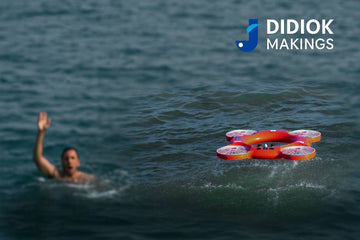When it comes to water rescues, every second counts.
Whether you're dealing with a capsized kayak on a lake or a flood victim swept away by coastal currents, one of the most common—and dangerous—challenges faced by rescue teams is simple: getting there fast enough.
The Problem with Traditional Response Methods
In many parts of the world, water rescue still relies heavily on boats and manual lifeguard deployment. These methods work, but they’re not always fast enough—especially in remote or hard-to-access areas. By the time the boat is launched, the crew is in position, and the rescue begins, precious minutes may have passed.
This isn’t just a logistical issue. It’s a life-or-death delay.
What Other Countries Are Doing Right
Some countries are already rethinking their approach.
In Japan, coastal authorities have started using remotely operated rescue drones to reach swimmers in distress—particularly in areas where boats can't reach quickly due to rocks, tide shifts, or limited beach access.
In Italy, civil protection units are experimenting with airborne flotation devices—lightweight UAVs that can fly over crowds, flooded streets, or stormy shorelines and drop life-saving gear directly where it’s needed.
These tools aren’t meant to replace traditional rescue teams. But they buy time—and sometimes that’s all it takes to turn a tragedy into a save.
A Practical Option for Faster Response: JX-6A Water Rescue Drone
If you're part of a local government agency, fire and rescue unit, or coastal patrol, you may be asking what options are available now—not five years down the road.
That’s where a solution like the JX-6A water rescue drone comes in.
- Remote range of 1100 meters – You can deploy it from shore or an emergency vehicle without needing to be close to the water.
- Flight speed over 13 meters per second – That means it can cover a football field in under 8 seconds.
- One-button launch – When time is tight, simplicity matters. With just one operator, you can get it airborne instantly.
It’s not a miracle device—but it does close the gap between distress and support. For many responders, that’s the critical missing link.
Final Thoughts
Faster response times aren’t just about buying new gear. They’re about rethinking what’s possible, and combining existing skills with the right technology.
Whether you're inland or along the coast, it might be time to explore how tools like the JX-6A can help you reach those who need help—before it's too late.





